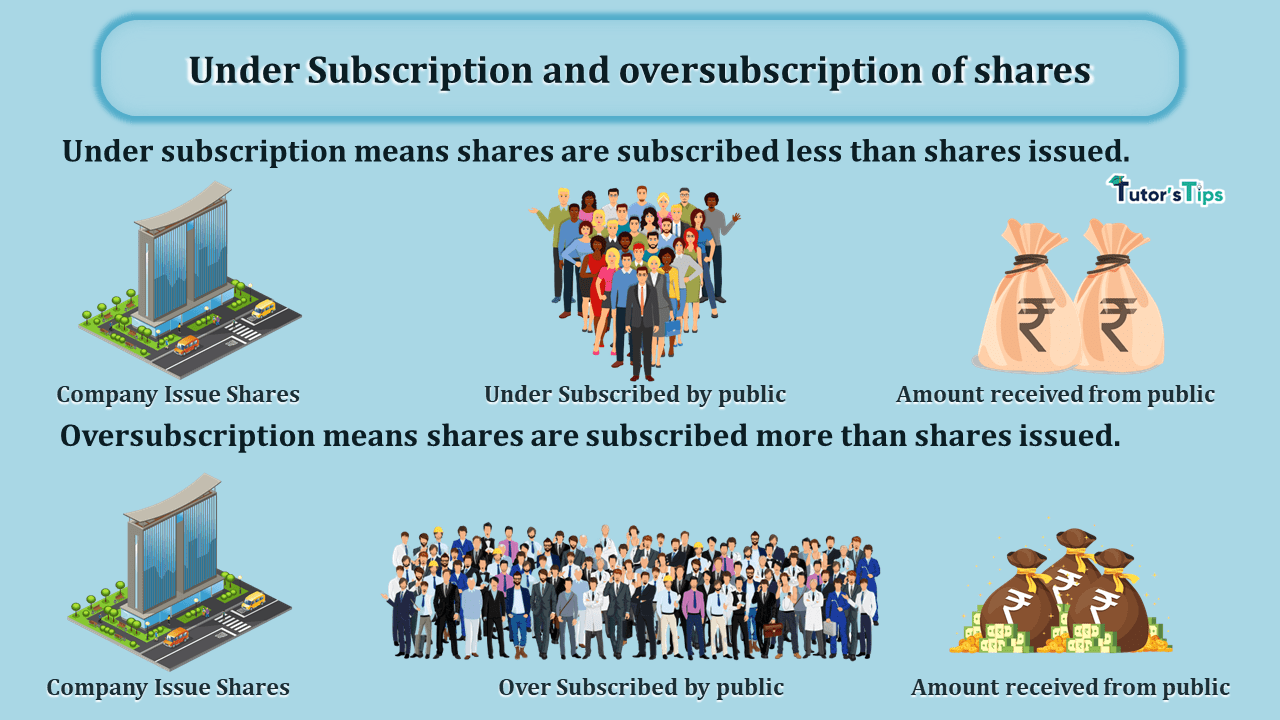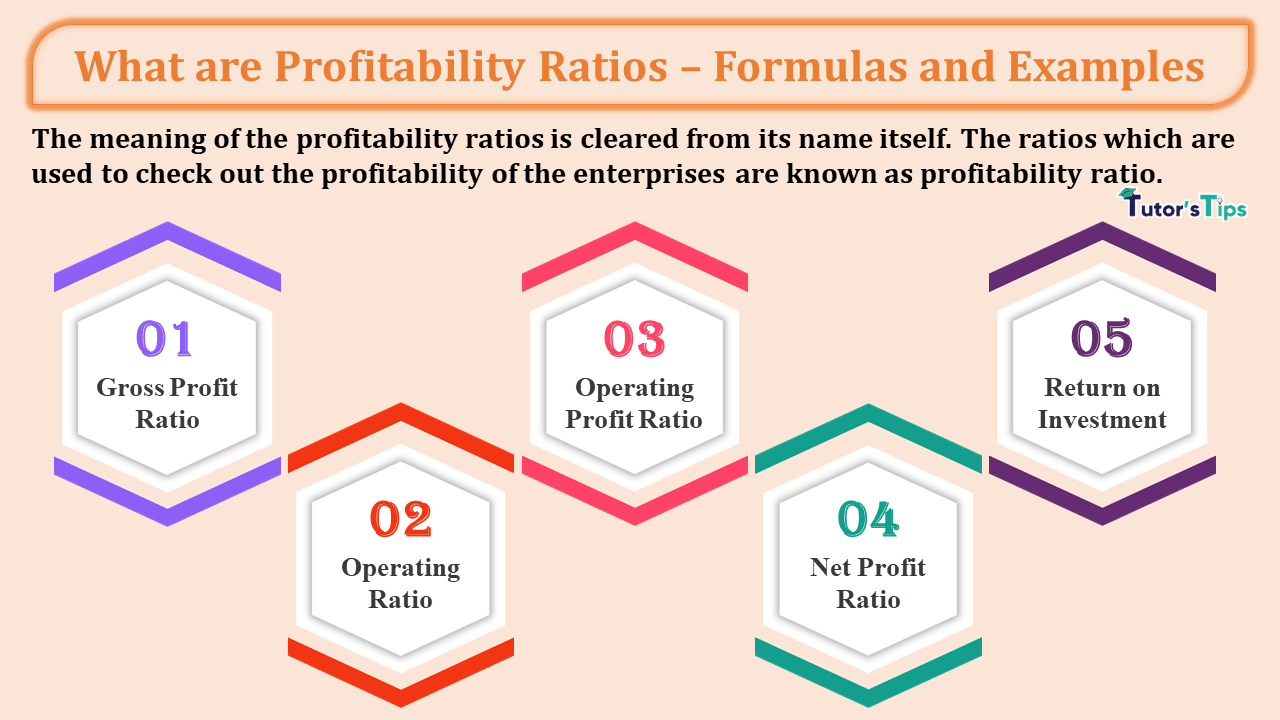Under Subscription and oversubscription of shares are opposite terms to each other. Under subscription is used when shares are subscribed less than the number of shares issued but oversubscription is used when shares are subscribed more than the number of shares issued.
What is Under Subscription of shares?
Under Subscription means less number of shares subscribed by the public than the number of shares issued. In this case, the same accounting treatment will be followed and just treated all journal entries with an actual subscribed number of shares rather than issued capital.
Example of Under Subscription of shares:
ABC limited issued 1,00,000 shares @ 10 each but public subscribed 9,50,000 shares only.
So, In this case, is known as under subscription of share, and the company will pass all journal entries and make the next calls for subscribed capital i.e. 9,50,000 shares.
Accounting entries in the case of Under subscription of shares
| Date | Particulars |
L.F. | Debit | Credit | |
| Bank A/c | Dr. | ***** | |||
| Discount on Issue of Shares A/c | Dr. | *** | |||
| To Shares Application A/c | ***** | ||||
| (Being share application money received) | |||||
| Shares Application A/c | Dr. | ***** | |||
| To Share Capital A/c | ***** | ||||
| To Securities Premium A/c[If any] | *** | ||||
| (Being Shares allotted and securities premium created (if issued at a premium)against the payment received on share application) | |||||
| Shares Allotment A/c | Dr. | ***** | |||
| To Share Capital A/c | ***** | ||||
| To Securities Premium A/c[If any] | *** | ||||
| (Being Shares allotted and securities premium created (if issued at a premium) against the payment received on share application) | |||||
| Bank A/c | Dr. | ***** | |||
| Discount on Issue of Shares A/c | Dr. | *** | |||
| To Shares Allotement A/c | ***** | ||||
| (Being share Allotment money received) | |||||
| Shares 1st Call A/c | Dr. | ***** | |||
| To Share Capital A/c | ***** | ||||
| To Securities Premium A/c[If any] | *** | ||||
| (Being Shares 1st call and securities premium created (if issued at a premium)against the payment received on share 1st call) | |||||
| Bank A/c | Dr. | ***** | |||
| Discount on Issue of Shares A/c | Dr. | *** | |||
| To Shares 1st Call A/c | ***** | ||||
| (Being share 1st call money received) | |||||
| Shares 2nd Call A/c | Dr. | ***** | |||
| To Share Capital A/c | ***** | ||||
| To Securities Premium A/c[If any] | *** | ||||
| (Being Shares 2nd call and securities premium created (if issued at a premium)against the payment received on share 2nd call) | |||||
| Bank A/c | Dr. | ***** | |||
| Discount on Issue of Shares A/c | Dr. | *** | |||
| To Shares 2nd Call A/c | ***** | ||||
| (Being share 2nd Call money received) | |||||
| So on………………. | |||||
Note: – All types of accounting journal entries are shown in the previous article which is shown as follows:
Issue of Shares – Meaning, types, and accounting treatment
What is the Oversubscription of shares?
Oversubscription of shares means more number of shares subscribed by the public than the number of shares issued. In this case, the different accounting treatments will be followed but remember one thing always that you can not allot full shares because the company can only allot the share up to the number of shares actually issued. So, In this situation, the company has to adopt one of the following three methods:
- Reject Excess number of applications and refund Money
- Partial or Pro-rata basis allotment.
- The mixture of both of the above methods.
1. Reject the Excess number of applications and refund Money:
This is a simple way to tackle the situation when the company received more applications for the subscription of shares. The company can decide to allot shares only to those individuals or corporations that applied more than a specific number of shares and who applied less number of share from this specific limit their application will be rejected and application money will be refunded to them.
2. Partial or Pro-rata basis allotment.
In this method, The company will be allotted the share on a pro-rata basis. It means the company will be allotted the specific number of shares against the specific number of applied share i.e. 3 number of shares will be allotted against 5 number of shares applied by the subscriber. The excess amount will be adjusted with the next calls or treated as calls in advance.
3. The mixture of both of the above methods.
In this method, The company will be allotted the share on a pro-rata basis as well as reject some of the application which is below from specific limit decided by the company. The excess amount of share whose allotment is allowed on the pro-rata basis will be adjusted with the next calls or treated as calls in advance and the excess amount of rejected applications will be refunded.
Advertisement-X
Example of oversubscription of shares:
ABC limited issued 1,00,000 shares @ 10 each but public subscribed 11,50,000 shares only.
So, In this case, is known as oversubscription of share, and the company will pass all journal entries and make the next calls for up to issued capital i.e. 10,00,000 shares and adjust or refund the balance amount.
Accounting entries in the case of Oversubscription of shares
| Date | Particulars |
L.F. | Debit | Credit | |
| Bank A/c | Dr. | ***** | |||
| Discount on Issue of Shares A/c | Dr. | *** | |||
| To Shares Application A/c | ***** | ||||
| (Being share application money received) | |||||
| Shares Application A/c | Dr. | ***** | |||
| To Share Capital A/c | ***** | ||||
| To Securities Premium A/c[If any] | *** | ||||
| To Bank A/c | *** | ||||
| To Share Allotment A/c [If any] | *** | ||||
| To Calls in Advance A/c [if any] | *** | ||||
| (Being Shares allotted and securities premium created (if issued at a premium)against the payment received on share application) | |||||
This is all about Under Subscription and oversubscription of shares and The adjustment amount will be treated as calls in advance please check the following article of calls in advance for other journal entries:
Calls in Arrears and Calls in Advances
Thanks for reading the topic.
please comment your feedback whatever you want. If you have any questions, please ask us by commenting.
References: –







1 Comment